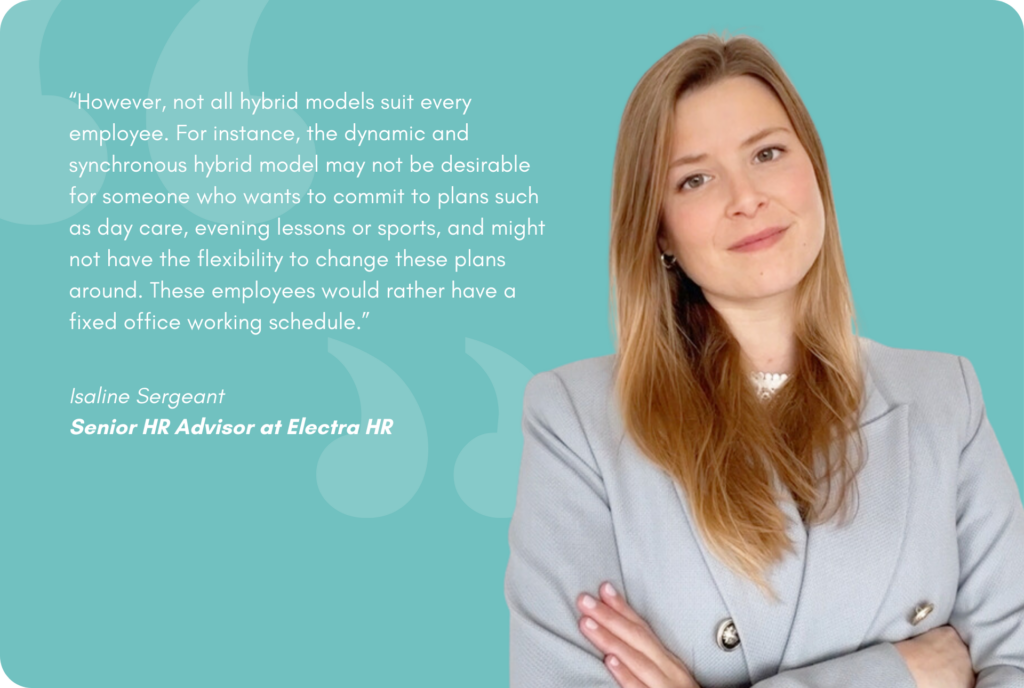By Isaline Sergeant, Senior HR Advisor at Electra HR
Both fully remote and hybrid models have pros and cons. Depending on the company and the profile of people who compose the business, one model might be more suitable than the other.
Following the Great Resignation, it appears clearly that work-life balance is not at the core of employees’ mind when looking for a new role, and for current employees in their choice to remain at a company. The demand for flexible working has increased dramatically and some companies are still questioning how this can translate to their businesses.
“Compared to an office-based company, it reduces staff time by cutting the commute and fuel needed. It also prevents employees from feeling too isolated and helps build a stronger team spirit.”
– Isaline Sergeant, Senior HR Advisor at Electra HR
Obviously, if your employees have to perform tasks exclusively in the office and there is no alternative, the only possibility for them will be the standard work-from-office model. The choice between providing a fully remote or a hybrid environment enters into the picture when all tasks can be actioned from a home office.
Remote working pros and cons
On the employee’s side, we observe less stress, higher productivity, better work-life balance and staff retention. At the same time, some people might not cope very well with this environment and feel isolated or distracted.
For the employers, it is worth stressing that they now can cut some spendings, e.g. office space rent, materials, commute reimbursement etc. An even bigger pro is that employers can now benefit from an international talent pool, either by hiring contractors anywhere in the world, or, via Employers of Record to avoid having to create a legal entity in the country their ideal candidate is located whilst still offering a permanent or fixed-term contract of employment.
However, downsides are still to be considered such as the need for intricate communication, the lack of solidarity within teams, and complex onboardings.

Hybrid models pros and cons
There are multiple types of hybrid models (static, dynamic, synchronous) but what they all have in common is the mixture between working in the office and working from home/another co-working space. Compared to an office-based company, it reduces staff time by cutting the commute and fuel needed. It also prevents employees from feeling too isolated and helps build a stronger team spirit. Employers might find in hybrid models a compromise between staff wellbeing, while lowering the office expenses due to the likely move into a smaller office space. Face-to-face onboarding is now back on the table as well.
However, not all hybrid models suit every employee. For instance, the dynamic and synchronous hybrid model may not be desirable for someone who wants to commit to plans such as day care, evening lessons or sports, and might not have the flexibility to change these plans around. These employees would rather have a fixed office working schedule.
Interested in finding out how Electra HR can help you and your team? Reach out to Isaline Sergent at isaline@electra-hr.com or +44 (0)1622 801 209.

